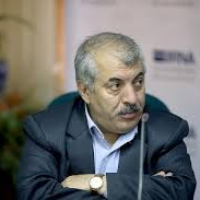An Analysis on the Spatial Distribution of Religious Per capita in Urban Neighborhoods (Case Study: Holy City of Qom)
One of the most important goals of detailed plans is to provide standard per capita municipal services in order to meet the needs of citizens. The strategic point in the feasibility of these plans is to adapt to the context in which an Islamic society demands its own requirements. In the Islam, the answer to the material and metamaterial needs of human beings is considered and the city should facilitate this important.If the provision of human spiritual needs along with his material needs is considered, it is important to provide the per capita bodies corresponding to this need (such as religious land use). This study evaluates the detailed plan of the holy city of Qom from this perspective, while providing a model for the pathology of the spatial distribution of the religious per capita of cities, where the deficiency of various qualitative and quantitative researches on the religious per capita of cities is quite noticeable.The research was descriptive-analytical in which the data were collected by documentary method and field observation and finally, the spatial data (GIS) obtained from the field survey of the researcher were analyzed.The results indicate that in Qom the per capita lack of religious land use in the urban neighborhoods is proven by various analytical methods. The detailed plan puts about 7% of the religious uses of the neighborhoods in widening the passages. Lack of standard distribution of religious spaces has led to deviations of at least 34% to 68% from the goals.
-
Explaining effective strategies in order to organize the vulnerability of the transportation network of urban areas against earthquakes (research area: District 2, District 16, Tehran)
Mahmoud Jomehpour *, Gholamreza Latifi, Sama Ghanbari
Road journal, -
The Role of Development Communications in Urban Development (Case Study: Development in the City of Asaluyeh)
Maryam Avani *, Gholamreza Latifi
Journal of News Sciences, -
Theoretical Foundations of Sociology from Viewpoint of Quran
*, Seyed Abdolvahab Taleghani, Zahra Faghih Imani
Interdisciplinary Quaranic Studies, -
The Development of C. Wright Mill's Thoughts in the New Paradigm of Sociology
Muhsen Sadeghi Amini, Akbar Mirsepah, Jafar Hezarjaribi
Marifat,




